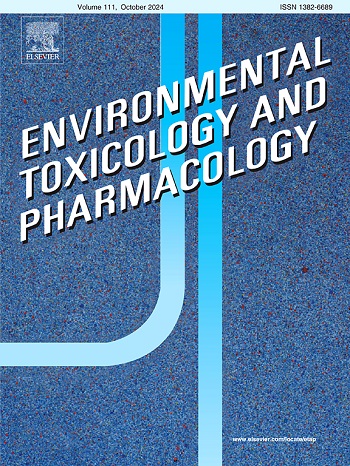摄入微塑料以及同时接触陶瓷鼻疽病毒和氟吡拉呋喃酮会降低蜜蜂(Apis mellifera L.)的存活率
IF 4.2
3区 环境科学与生态学
Q2 ENVIRONMENTAL SCIENCES
引用次数: 0
摘要
蜜蜂面临着多种威胁,包括病原体(如陶瓷鼻疽病毒)、杀虫剂和环境污染物。新型杀虫剂氟吡脲和环境中的微塑料引起了人们对蜜蜂健康的极大关注。本研究评估了微塑料、氟吡脲和神经鞘螨对蜜蜂健康的同时影响,重点关注蜜蜂的存活率、神经鞘螨的复制、每日食物消耗量和蜜蜂中肠组织学改变。结果表明,与对照组相比,所有处理的蜜蜂寿命都明显缩短,其中氟吡呋喃酮、微塑料和N. ceranae的组合影响最为严重。微塑料和氟哌鎓的暴露也增加了神经鞘螨的增殖,尤其是在受到这两种压力的蜜蜂中。组织学分析表明,中肠再生细胞巢减少,核基质发生变化,这表明存在应激反应。总之,自然界中同时存在的生物和非生物应激源会产生协同作用,从而对蜜蜂造成有害影响。本文章由计算机程序翻译,如有差异,请以英文原文为准。
Microplastic ingestion and co-exposure to Nosema ceranae and flupyradifurone reduce the survival of honey bees (Apis mellifera L.)
Bees are exposed to several threats, including pathogens (i.e. Nosema ceranae), pesticides and environmental contaminants. The new insecticide flupyradifurone, and the microplastics in the environment, have raised significant concerns on bee health. This study evaluated the simultaneous effects of microplastics, flupyradifurone, and N. ceranae on honey bee health, focusing on survival rates, N. ceranae replication, daily food consumption, and bee midgut histological alterations. Results showed a significant decrease in bee longevity across all treatments compared to the control, with the combination of flupyradifurone, microplastics, and N. ceranae having the most severe impact. Microplastics and flupyradifurone exposure also increased N. ceranae proliferation, especially in bees subjected to both stressors. Histological analysis revealed reduced regenerative cell nests in the midgut and changes in the nuclear matrix, indicating stress responses. Overall, the simultaneous presence of both biotic and abiotic stressors in nature can synergistically interact, leading to harmful effects on bees.
求助全文
通过发布文献求助,成功后即可免费获取论文全文。
去求助
来源期刊
CiteScore
7.00
自引率
4.70%
发文量
185
审稿时长
34 days
期刊介绍:
Environmental Toxicology and Pharmacology publishes the results of studies concerning toxic and pharmacological effects of (human and veterinary) drugs and of environmental contaminants in animals and man.
Areas of special interest are: molecular mechanisms of toxicity, biotransformation and toxicokinetics (including toxicokinetic modelling), molecular, biochemical and physiological mechanisms explaining differences in sensitivity between species and individuals, the characterisation of pathophysiological models and mechanisms involved in the development of effects and the identification of biological markers that can be used to study exposure and effects in man and animals.
In addition to full length papers, short communications, full-length reviews and mini-reviews, Environmental Toxicology and Pharmacology will publish in depth assessments of special problem areas. The latter publications may exceed the length of a full length paper three to fourfold. A basic requirement is that the assessments are made under the auspices of international groups of leading experts in the fields concerned. The information examined may either consist of data that were already published, or of new data that were obtained within the framework of collaborative research programmes. Provision is also made for the acceptance of minireviews on (classes of) compounds, toxicities or mechanisms, debating recent advances in rapidly developing fields that fall within the scope of the journal.

 求助内容:
求助内容: 应助结果提醒方式:
应助结果提醒方式:


